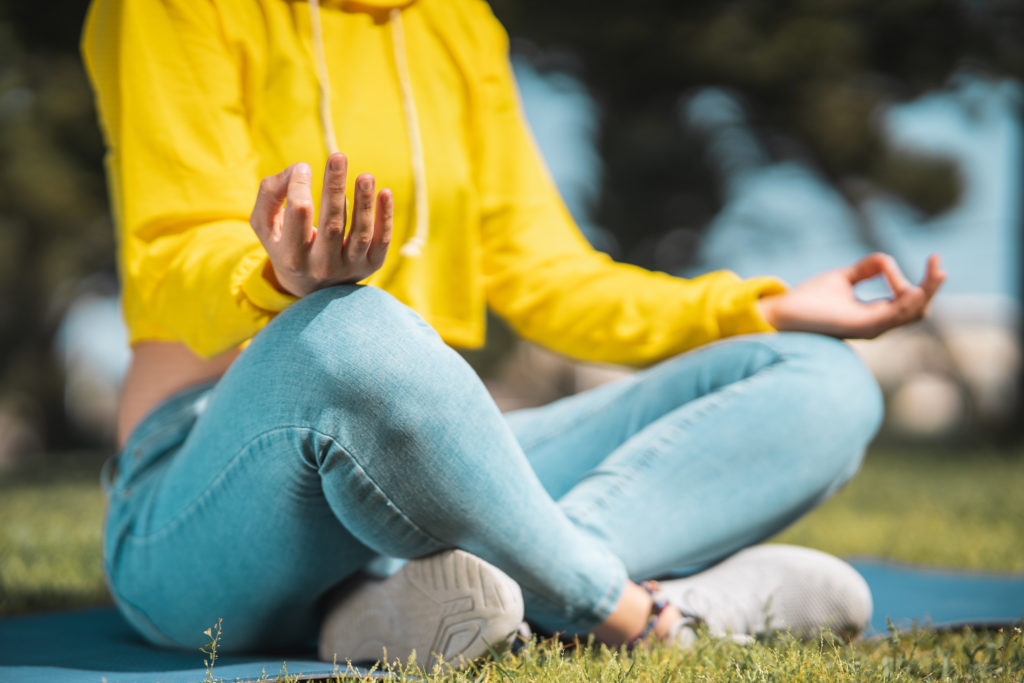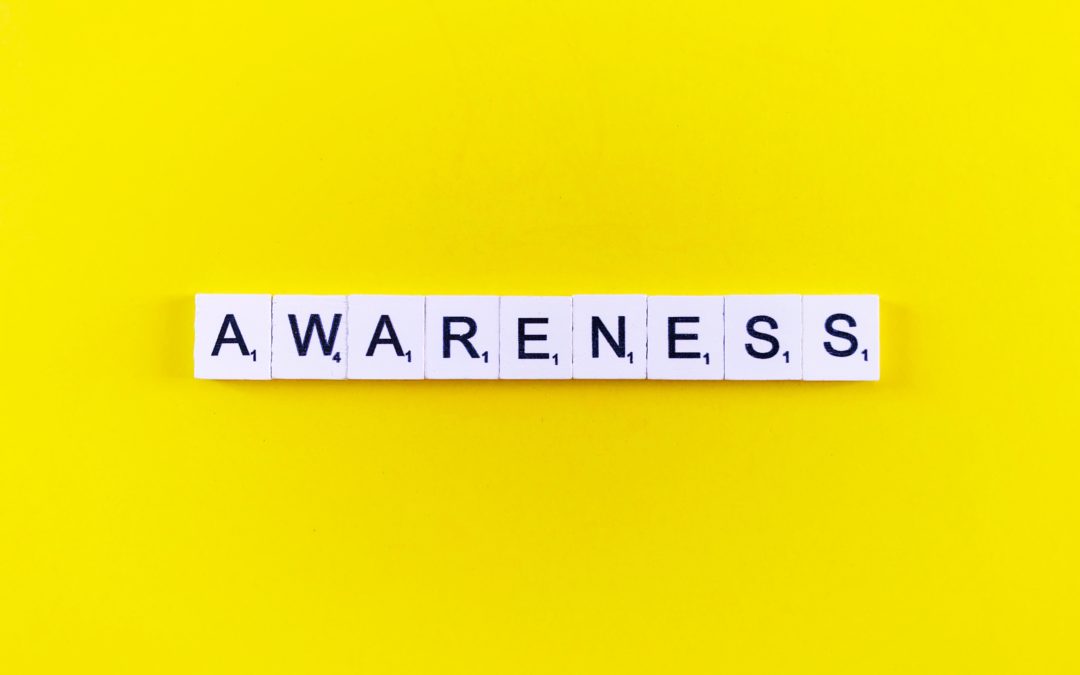Growing up, we often aren’t taught how important it is to be attuned to our body. We also aren’t taught how we can cultivate body awareness. In Western culture and medicine, there is a tendency to break ideas down and put them into boxes to make sense of them. This has been the approach to understanding our bodies as well.
In different areas of health care, groups and individuals are changing this mindset and how they see individuals. They are starting to approach care through a more holistic lens. When injuries occur, it’s not one muscle or bone that’s affected – the whole body and mind respond to address the problem. In this blog, we will discuss the incredible benefits of body awareness. You will also learn how understanding your body’s language can support your health and help you recover from past and present injuries.
Limited body awareness leads to acute and chronic injury
Imagine a seasoned athlete pushing their limits on the field or an office worker chained to their desk for hours. These may seem like very different scenarios, but both involve repeated patterns of muscle activation. This can create stress and strain our tissues which can eventually result in the overuse. The chances of overuse increase when we ignore or bypass the sensations of pain or other signals the body is trying to communicate.
Body awareness is key to our holistic well-being. When we disconnect from our bodies, we tend to ignore their subtle signals of discomfort or strain. These signals, if noticed, could serve as early warning signs. This could help us adjust our position or stop certain actions in order to bring relief. Unfortunately, neglecting these cues can cause minor discomfort to shift into significant injury.
Consider poor posture. It is an everyday habit that might seem inconsequential. But, over time, this habit can lead to conditions like back pain, neck pain, and other types of musculoskeletal strain. Without a developed sense of body awareness, we can subject our bodies to sustained stressors on accident. This creates a fertile ground for chronic conditions to take root.
Lack of body awareness and the impact of posture

One of the most striking examples of the connection between limited body awareness and injury is posture. Our posture is a silent storyteller. How we hold ourselves throughout a day is learned through experiences, observing others, and our environment. Poor posture is often a result of poor body awareness and awareness of the space around us. Poor posture that places increased stress on an area of our body can have far-reaching effects on our physical health.
When we slouch or hunch over, we place undue stress on our muscles, ligaments, and joints. Over time, this stress can lead to chronic pain, limited mobility, and even structural changes in the spine. Without recognizing these imbalances in our posture, we continue a cycle of discomfort and injury.
The effect of stress on our sense of self
Stress is ever-present in modern life. And, it casts a far-reaching shadow on our ability to be aware of ourselves. Chronic stressors trigger a fight-or-flight response in the body. This forces us to react quickly and from learned behaviors. Chronic stress can lead to tension, muscle tightness, and shallow breathing. These physical manifestations of stress further diminish our connection with our bodies. It can become difficult to discern between stress-induced sensations and genuine bodily needs.
The mind and the body are intricately connected. And stress can create a dissonance between the mind and the body. As stress takes hold, we may dissociate, or detach, from our physical sensations as a coping mechanism. This can lead to a very fragmented sense of self which hampers injury recovery. Over time, this can lead to further disconnection and imbalance.
Communication through the nervous system
To understand the impact of stress on our holistic health, we must explore the autonomic nervous system (ANS). The ANS governs our involuntary bodily functions such as heart rate, digestion, and breathing. The ANS has two branches – the sympathetic nervous system (SNS) and the parasympathetic nervous system (PNS).
When we feel stressed, the SNS triggers the fight-or-flight response and prepares the body for action.
Activating the SNS causes a sudden boost of energy that lasts for a short period of time. The SNS also slows digestion, lowers immune system functioning, and dilates blood vessels to support the body’s need for action.

This is often referred to as the fight-or-flight system. The SNS triggers the behaviors of fleeing a dangerous situation or overcoming the threat by fighting. This response is essential for survival and is helpful in emergencies. But, this response can become problematic when chronic stress activates the SNS. The other branch of the ANS is the PNS. The PNS promotes rest and relaxation. This enables the body to relax, recover, and heal.
In modern life, there can be a sense that our life depends on performing jobs well or achieving unending goals. This mentality is often driven by internal and external factors. Regardless, it activates our stress response system. When the pressures of life are unending, there may be chronic activation of the SNS. Chronic SNS activation can create adverse health outcomes over time, both physically and mentally.
It can be challenging to notice these patterns in ourselves. It can be especially challenging without the ability to sense and interpret these physiological shifts in our bodies. If we are chronically overriding or ignoring our physical sensations, we will never find ways to allow our bodies to rest. We remain trapped in a state of fight-or-flight which inhibits the body’s natural healing mechanisms.
The holistic impact of stress on the human body
Stress doesn’t limit its effects to a single aspect of our well-being – it affects everything. Stress leaves a memorable mark, from the musculoskeletal system to the cardiovascular system. Here are a few examples of how the systems of the body are impacted by stress:
Musculoskeletal System
Chronic stress contributes to muscle tension, knots, and trigger points. These can restrict movement, perpetuate poor posture, and hinder injury recovery.1
Cardiovascular System
Prolonged stress increases heart rate and blood pressure, straining the cardiovascular system. This can make injury recovery challenging. Poor cardiovascular health will limit the body’s ability to deliver nutrients and oxygen to injured tissues.1
Immune System
Stress suppresses the immune system. This leaves the body vulnerable to infections and delays healing. A weakened immune system can lengthen recovery time and increase the risk of complications.1

Digestive System
Stress disrupts digestion. This can lead to indigestion, bloating, and irritable bowel syndrome. Poor digestion can hinder nutrient absorption and impair the body’s ability to heal and recover.2
Physical and mental stress slow healing
The intricate relationship between stress and holistic health is an example of the connection between the body and the mind. Stress can make it challenging for the body to find homeostasis. It can also push our body beyond what it is capable of. This can result in dysfunction or slowed healing.
Body awareness practices and the impact on health
Amidst the challenges posed by limited body awareness and stress, hope shines through in the form of body awareness practices. Mindfulness activities such as yoga, tai chi, meditation, progressive muscle relaxation can support your body. They do so by activating the PNS and allowing the body to focus its energy on recovery and relaxation.3 Through these different practices, individuals will develop patterns of holistic health and mind-body connection.
If you don’t already have a practice that supports this connection, below is a list of practices and information to support your curiosity and interest. Spend some time considering these activities. Allow yourself to take a moment after reading each one and imagine yourself performing them. Notice what your body is telling you by the tension or relaxation each image produces. Sit with any feelings that may arise. If wanted, you can dive a bit deeper and ask yourself why your body would feel that way. Don’t rush through – simply relax and bring awareness to the sensations that are present. Let your body speak.
Yoga
The practice of yoga fosters a deep connection between body and mind. Through conscious movement and breath, individuals enhance body awareness, promote relaxation, and improve flexibility – all of which are important for injury recovery.3
Tai Chi
Tai chi’s slow, deliberate movements encourage a heightened awareness of body sensations. By cultivating mindfulness in motion, individuals can address postural imbalances, reduce stress, and enhance overall body awareness.3

Meditation
Meditation serves as a bridge between the conscious and the subconscious. It allows individuals to explore their inner landscape. Mindfulness meditation, in particular, creates a clear awareness of bodily sensations. It also helps to stimulate the vagus nerve which plays an important role in stress reduction. This can help individuals recognize and manage stress-induced tension.3
Progressive Muscle Relaxation
This technique involves tensing and relaxing different muscle groups. By honing in on specific sensations, individuals develop a deep understanding of muscle tension and release. This can feel empowering and shed light on ways to alleviate stress-related muscle tightness.
Creating an ally with the body
Our bodies never stop being allies. Every moment of life they are fighting for us to live. And, they are doing their best to support our health and wellness. We can often treat them as the enemy – something to blame for our unhappiness or struggle. Separation, frustration, and avoidance of our bodies will cause us to continue to misunderstand the resource and the allyship our bodies are trying to provide.
The mindsets we develop that often create separation from the body are often the result of stress. The messages of “pushing through pain,” “your worth is in what you achieve,” “showing vulnerability will get you hurt,” move us to ignore and override our bodies. In doing so, we fail to understand what a support the body can be.
Pain is often the final cry for help from the body. Allowing ourselves to feel pain and understand all its details allows us to understand how it changes. When we aren’t allied with the body, we are aware of the details. Our avoidance may create significant unknowns or fear. This can lead to more avoidance and stress.
In injury recovery, informed decisions are important. Body awareness equips us with the tools to make the choices that are aligned with what our bodies need. When we are in connection with the body, we are more capable of knowing when to push forward, when to rest, and when to seek medical help. Injury recovery often demands resilience, both physically and emotionally. Body awareness builds a sense of self-compassion and resilience. It reminds us that we have an innate capacity for healing.3

Injury recovery is not often a straight path. To move effectively and safely back into balance, we need to work with our body not against it. Body awareness empowers us to navigate the balance between rest and activity, support and independence.
Final thoughts
Throughout our lives, body awareness allows us to be in tune to and aware of the details. Our natural response to pain is avoidance, but healing requires connection. Body awareness is our guide to what is needed, at what time, and how much. It is a bridge between the physical and the mindful. As we encounter injury and move into recovery, this connection can serve as a compass. It can guide us towards a deeper understanding of ourselves and the transformative power of holistic healing. Through body awareness, we reclaim our well-being and develop resiliency and harmony. It is a doorway to self-discovery that is accessible throughout our lifetime.
References
- Barsotti N, Chiera M, Lanaro D, Fioranelli M. Impact of stress, immunity, and signals from endocrine and nervous system on fascia. Frontiers in Bioscience-Elite. 2021;13(1):1. doi:https://doi.org/10.2741/870
- Askarova S, Umbayev B, Masoud AR, et al. The Links Between the Gut Microbiome, Aging, Modern Lifestyle and Alzheimer’s Disease. Frontiers in Cellular and Infection Microbiology. 2020;10. doi:https://doi.org/10.3389/fcimb.2020.00104
- Gibson J. Mindfulness, Interoception, and the Body: A Contemporary Perspective. Frontiers in Psychology. 2019;10. doi:https://doi.org/10.3389/fpsyg.2019.02012
